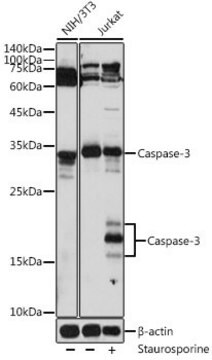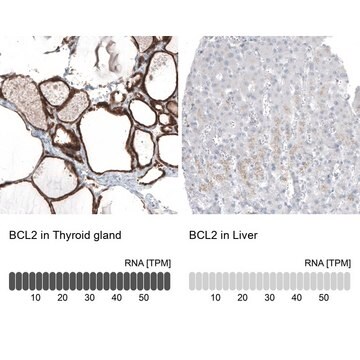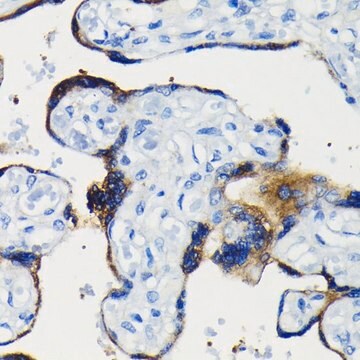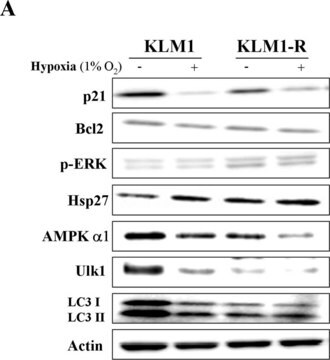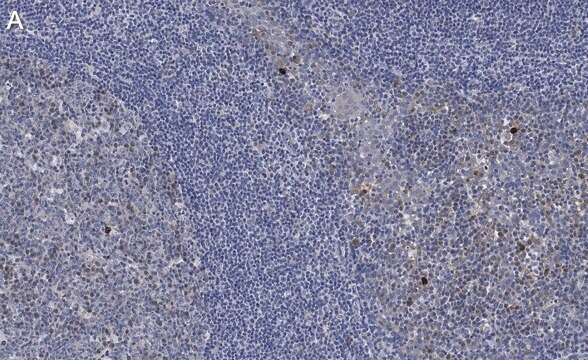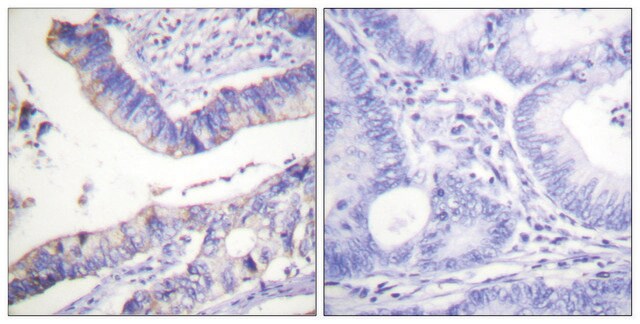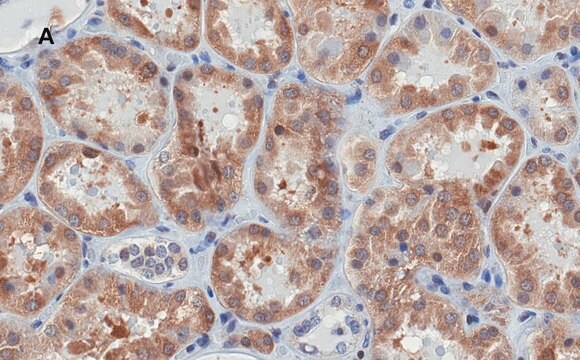詳細
We are committed to bringing you greener alternative products, which adhere to one or more of the 12 Principles of Green Chemistry. This antibody is preservative-free, produced without the harm or sacrifice of animals and exceptionally stable to allow for ambient shipping and storage if needed, and thus aligns with "Waste Prevention", "Designing Safer Chemicals" and "Design for Energy Efficiency".
Click here for more information.
ZooMAb® antibodies represent an entirely new generation of recombinant monoclonal antibodies. Each ZooMAb® antibody is manufactured using our proprietary recombinant expression system, purified to homogeneity, and precisely dispensed to produce robust and highly reproducible lot-to-lot consistency. Only top-performing clones are released for use by researchers. Each antibody is validated for high specificity and affinity across multiple applications, including its most commonly used application. ZooMAb® antibodies are reliably available and ready to ship when you need them.
特異性
Clone 1G22 is a ZooMAb® rabbit recombinant monoclonal antibody that specifically detects Caspase-9. It targets an epitope within 18 amino acids from the N-terminal half.
免疫原
KLH-conjugated linear peptide corresponding to 18 amino acids from the N-terminal half of human Caspase-9.
アプリケーション
Quality Control Testing
Evaluated by Western Blotting in HeLa cell lysate.
Western Blotting Analysis: A 1:1,000 dilution of this antibody detected Caspase-9 in HeLa cell lysate.
Tested Applications
Western Blotting Analysis: A 1:1,000 dilution from a representative lot detected Caspase-9 in lysates from K562 cells, HeLa cells treated with Staurosporine, and at 1:10,000 dilution in Human kidney tissue lysate...
Affinity Binding Assay: A representative lot of this antibody bound Caspase-9 peptide with a KD of 3.4 x 10-8 in an affinity binding assay.
Immunohistochemistry (Paraffin) Analysis: A 1:100 dilution from a representative lot detected Caspase-9 in Human kidney tissue sections.
Note: Actual optimal working dilutions must be determined by end user as specimens, and experimental conditions may vary with the end user.
ターゲットの説明
Caspase-9 (UniProt: P55211; also known as EC:3.4.22.62, CASP-9, Apoptotic protease Mch-6, Apoptotic protease-activating factor 3, APAF-3, ICE-like apoptotic protease 6, ICE-LAP6) is encoded by the CASP9 (also known as MCH6) gene (Gene ID: 842) in human. Caspases can be categorized either into upstream initiators (caspases 2, 8, 9, 10) or downstream executioners (caspases 3, 6, 7). A unique feature of all caspases is that they hydrolyze peptide bonds on the carboxyl side of an aspartate residue (the P1 residue) and there is the absolute requirement of aspartic acid residue in the substrate P1 position. The P4 residue is important in substrate recognition and specificity. In their inactive state, initiator caspases exist as monomers that require homodimerization for activation. This dimerization is achieved when initiator caspases are recruited to oligomeric activation platforms. Caspase-9, an initiator caspase, is a key player in the intrinsic apoptosis pathway. In its procaspase-9 form it exists as monomers and possesses a long pro-domain, which contains a caspase activation domain (CARD) motif, through which caspase-9 is recruited and activated at a multiprotein platform. Caspase-9 is proposed to be activated either via the induced conformation model that involves its interaction with Apaf-1 through the CARD domain or via the induced proximity model in which apoptosome provides a platform for caspase-9 dimerization. In the latter model, to retain its catalytic activity, caspase-9 has to maintain binding to the apoptosome. The constitutive expression of caspase-9 is reported to be ubiquitous in various mammalian tissues, and abnormal suppression of caspase-9 activity can lead to developmental defects. Mice lacking caspase-9 die in the perinatal with serious abnormalities of the brain due to suppression of apoptosis during brain development. This ZooMAb® recombinant monoclonal antibody, generated by our propriety technology, offers significantly enhanced specificity, affinity, reproducibility, and stability over conventional monoclonals. (Ref.: Li, P., et al. (2017). Oncotarget. 8(14); 23996- 24008; Hu, Q., et al. (2014). Proc. Natl. Acad. Sci. USA. 111(46); 16254-16261; Shi, Y. (2004). Cell. 117(7); 855-858; Kuida., K et al. (1998). Cell. 94(3):325-337).
物理的形状
Purified recombinant rabbit monoclonal antibody IgG, lyophilized in PBS with 5% Trehalose, normal appearance a coarse or translucent resin. The PBS/trehalose components in the ZooMAb formulation can have the appearance of a semi-solid (bead like gel) after lyophilization. This is a normal phenomenon. Please follow the recommended reconstitution procedure in the data sheet to dissolve the semi-solid, bead-like, gel-appearing material. The resulting antibody solution is completely stable and functional as proven by full functional testing. Contains no biocide or preservatives, such as azide, or any animal by-products. Larger pack sizes provided as multiples of 25 µL.
再構成
300 µg/mL after reconstitution at 25 µL per vial. Please refer to guidance on suggested starting dilutions and/or titers per application and sample type.
保管および安定性
Recommend storage of lyophilized product at 2-8°C; Before reconstitution, micro-centrifuge vials briefly to spin down material to bottom of the vial; Reconstitute each vial by adding 25 µL of filtered lab grade water or PBS; Reconstituted antibodies can be stored at 2-8°C, or -20°C for long term storage. Avoid repeated freeze-thaws.
法的情報
ZooMAb is a registered trademark of Merck KGaA, Darmstadt, Germany
免責事項
Unless otherwise stated in our catalog or other company documentation accompanying the product(s), our products are intended for research use only and are not to be used for any other purpose, which includes but is not limited to, unauthorized commercial uses, in vitro diagnostic uses, ex vivo or in vivo therapeutic uses or any type of consumption or application to humans or animals.

